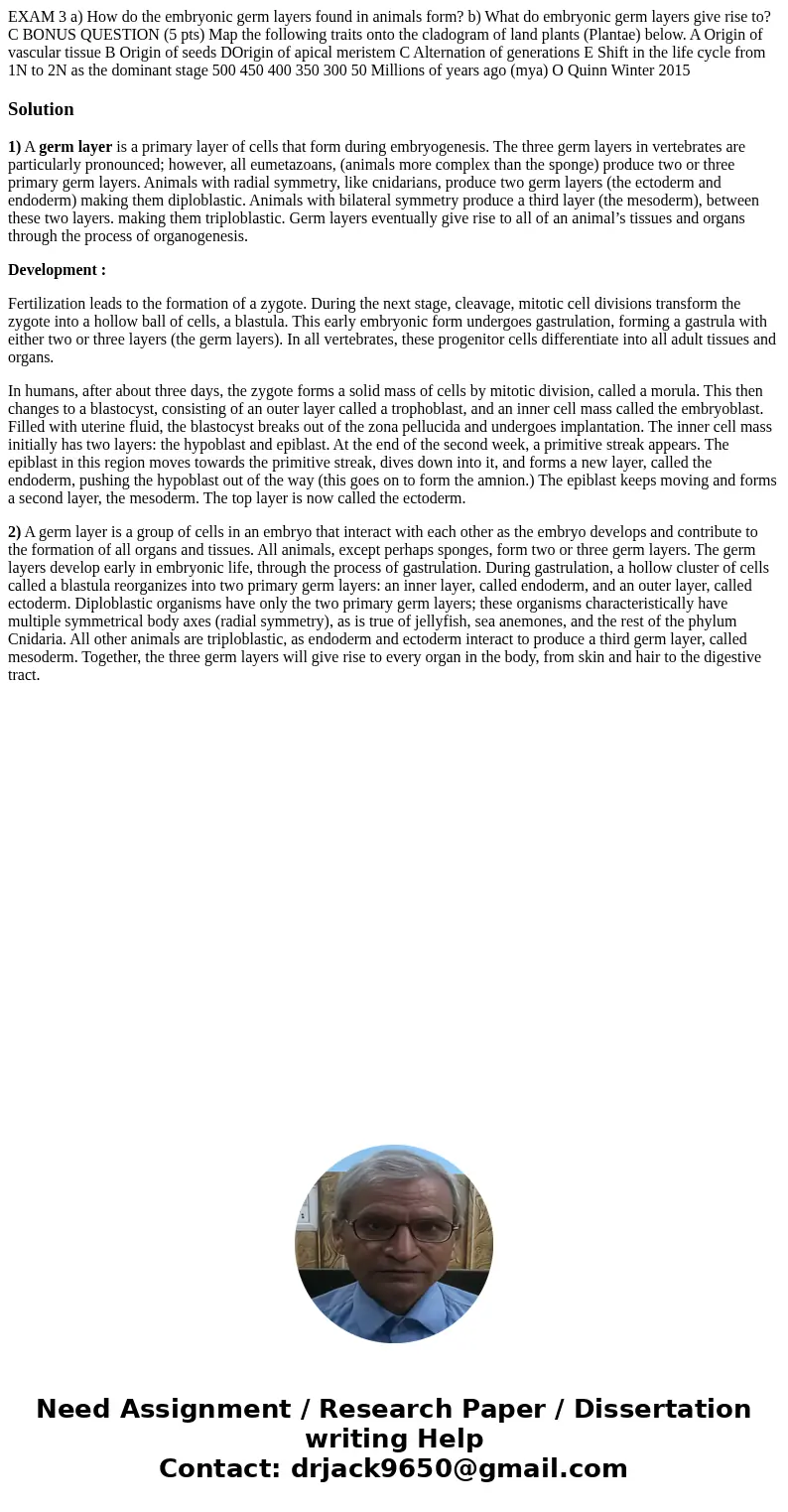EXAM 3 a How do the embryonic germ layers found in animals f
Solution
1) A germ layer is a primary layer of cells that form during embryogenesis. The three germ layers in vertebrates are particularly pronounced; however, all eumetazoans, (animals more complex than the sponge) produce two or three primary germ layers. Animals with radial symmetry, like cnidarians, produce two germ layers (the ectoderm and endoderm) making them diploblastic. Animals with bilateral symmetry produce a third layer (the mesoderm), between these two layers. making them triploblastic. Germ layers eventually give rise to all of an animal’s tissues and organs through the process of organogenesis.
Development :
Fertilization leads to the formation of a zygote. During the next stage, cleavage, mitotic cell divisions transform the zygote into a hollow ball of cells, a blastula. This early embryonic form undergoes gastrulation, forming a gastrula with either two or three layers (the germ layers). In all vertebrates, these progenitor cells differentiate into all adult tissues and organs.
In humans, after about three days, the zygote forms a solid mass of cells by mitotic division, called a morula. This then changes to a blastocyst, consisting of an outer layer called a trophoblast, and an inner cell mass called the embryoblast. Filled with uterine fluid, the blastocyst breaks out of the zona pellucida and undergoes implantation. The inner cell mass initially has two layers: the hypoblast and epiblast. At the end of the second week, a primitive streak appears. The epiblast in this region moves towards the primitive streak, dives down into it, and forms a new layer, called the endoderm, pushing the hypoblast out of the way (this goes on to form the amnion.) The epiblast keeps moving and forms a second layer, the mesoderm. The top layer is now called the ectoderm.
2) A germ layer is a group of cells in an embryo that interact with each other as the embryo develops and contribute to the formation of all organs and tissues. All animals, except perhaps sponges, form two or three germ layers. The germ layers develop early in embryonic life, through the process of gastrulation. During gastrulation, a hollow cluster of cells called a blastula reorganizes into two primary germ layers: an inner layer, called endoderm, and an outer layer, called ectoderm. Diploblastic organisms have only the two primary germ layers; these organisms characteristically have multiple symmetrical body axes (radial symmetry), as is true of jellyfish, sea anemones, and the rest of the phylum Cnidaria. All other animals are triploblastic, as endoderm and ectoderm interact to produce a third germ layer, called mesoderm. Together, the three germ layers will give rise to every organ in the body, from skin and hair to the digestive tract.

 Homework Sourse
Homework Sourse